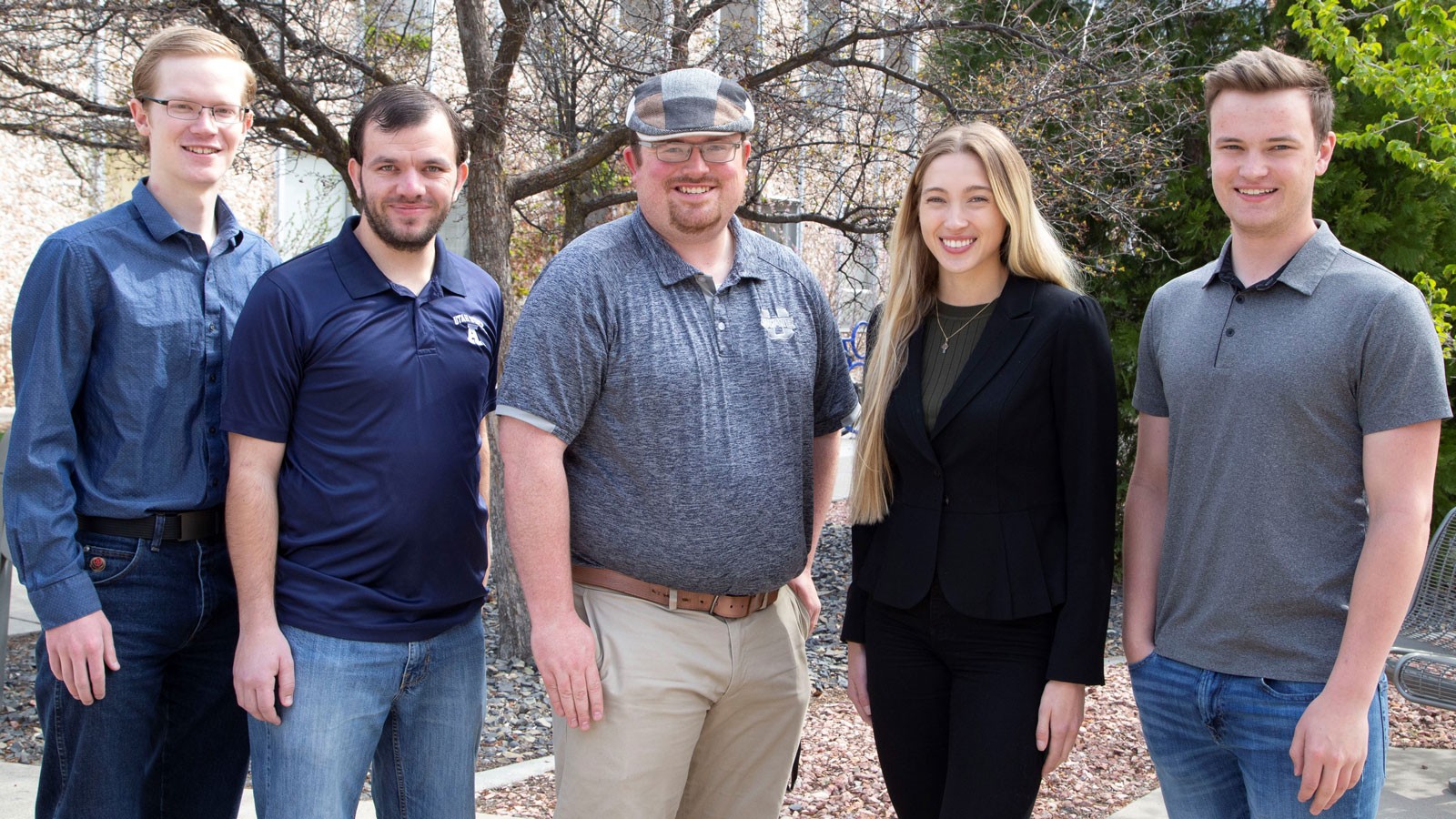Civil Engineering Students Part of Interdisciplinary Team Recognized in National Competition
A group of students' redesign of a greener Aggie Village won them an honorable mention in the EPA's
By Matilyn Mortensen |
Five Utah State University students received an honorable mention in this year's National Environmental Protection Agency RainWorks Challenge. For their project, the students created a concept plan for an Aggie Village redesign.
An interdisciplinary group of Utah State University students received an honorable mention “for envisioning a climate-resilient, community-focused campus” in this year’s Environmental Protection Agency RainWorks Challenge.
Civil engineering undergraduate students Ryan Richens, Trevor Wilson, Grace Sunderland and Robert Gordon worked with landscape architecture and environmental planning graduate student Justin Jaques to redesign the Aggie Village family housing complex for their competition entry.
According to the Environmental Protection Agency’s website, the Campus RainWorks Challenge is a green infrastructure design competition for American college and university students that seeks to engage with the next generation of environmental professionals, foster a dialogue about the need for innovative stormwater management techniques, and showcase the environmental, economic and social benefits of green infrastructure practices.
“One interesting thing about the Campus RainWorks Challenge is that the goal is managing stormwater, but they also want you to connect it to the rest of campus,” Robert Gordon said.
The team’s entry began as a class assignment and for some members of the group, and it even became part of their senior design project. While there are plans to renovate Aggie Village in the future and pieces of the team’s design could be used, there are many other factors that will be taken into consideration when the time comes to update the housing community.
The group’s entry is entitled “Bringing the Mountains Home” and was inspired by elements of Logan Canyon, including three retention pools, which are a nod to the canyon’s three dams. In creating the plan, the team tried to envision ways to make the project last 50-75 years into the future as Utah State and Cache Valley continue to grow.
“It was really cool to be able to see what we can do with such a big area and pretty much no limitations,” Grace Sunderland said. “What we are most proud of is how the site represents our local areas like Logan Canyon and the representation of the dams.”
WRITER
Matilyn Mortensen
Public Relations Specialist
College of Engineering
435-797-7512
matilyn.mortensen@usu.edu
CONTACT
Ryan Richens
a01842597@usu.edu
Comments and questions regarding this article may be directed to the contact person listed on this page.







